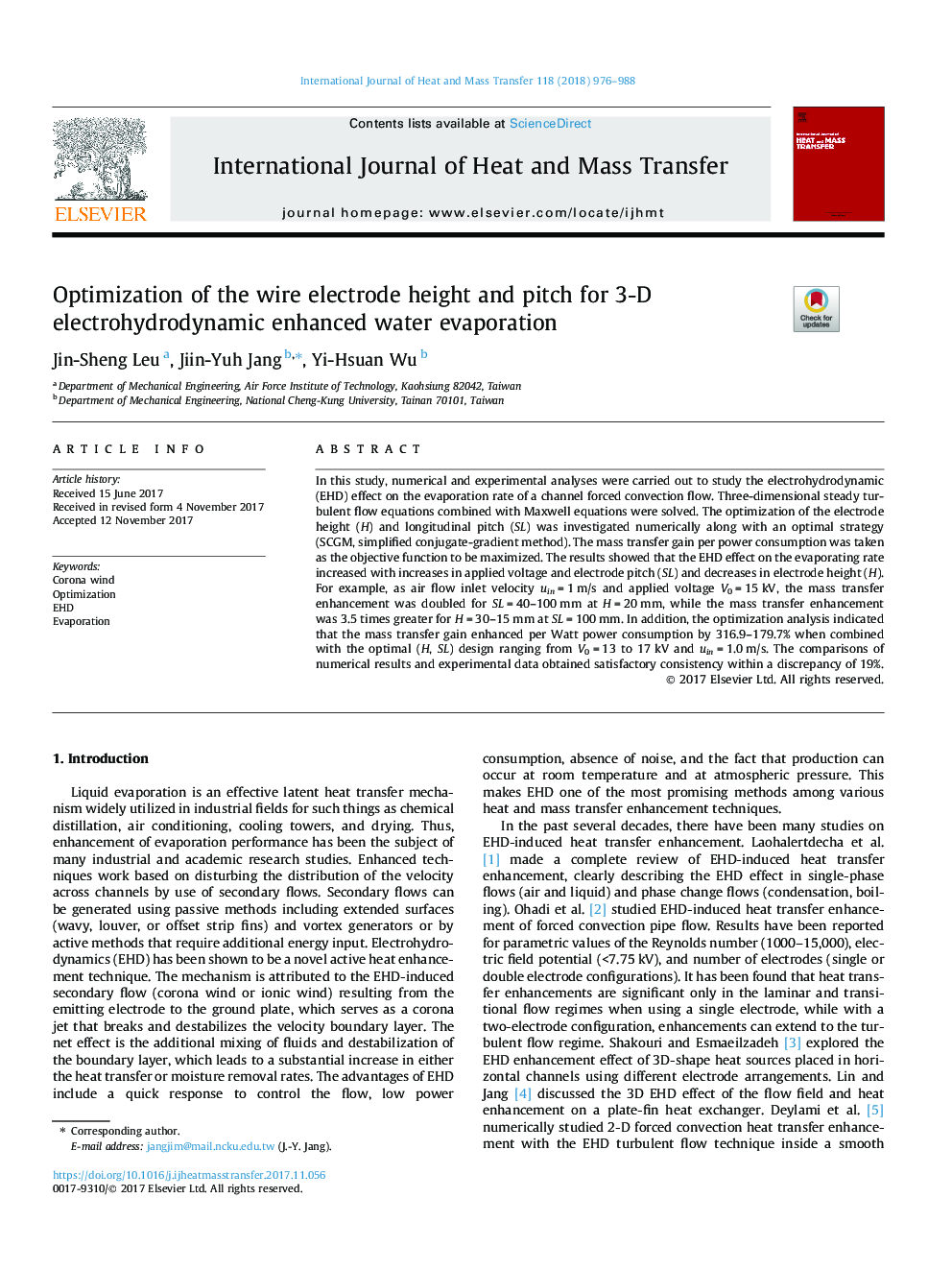| Article ID | Journal | Published Year | Pages | File Type |
|---|---|---|---|---|
| 7054815 | International Journal of Heat and Mass Transfer | 2018 | 13 Pages |
Abstract
In this study, numerical and experimental analyses were carried out to study the electrohydrodynamic (EHD) effect on the evaporation rate of a channel forced convection flow. Three-dimensional steady turbulent flow equations combined with Maxwell equations were solved. The optimization of the electrode height (H) and longitudinal pitch (SL) was investigated numerically along with an optimal strategy (SCGM, simplified conjugate-gradient method). The mass transfer gain per power consumption was taken as the objective function to be maximized. The results showed that the EHD effect on the evaporating rate increased with increases in applied voltage and electrode pitch (SL) and decreases in electrode height (H). For example, as air flow inlet velocity uinâ¯=â¯1â¯m/s and applied voltage V0â¯=â¯15â¯kV, the mass transfer enhancement was doubled for SLâ¯=â¯40-100â¯mm at Hâ¯=â¯20â¯mm, while the mass transfer enhancement was 3.5 times greater for Hâ¯=â¯30-15â¯mm at SLâ¯=â¯100â¯mm. In addition, the optimization analysis indicated that the mass transfer gain enhanced per Watt power consumption by 316.9-179.7% when combined with the optimal (H, SL) design ranging from V0â¯=â¯13 to 17â¯kV and uinâ¯=â¯1.0â¯m/s. The comparisons of numerical results and experimental data obtained satisfactory consistency within a discrepancy of 19%.
Related Topics
Physical Sciences and Engineering
Chemical Engineering
Fluid Flow and Transfer Processes
Authors
Jin-Sheng Leu, Jiin-Yuh Jang, Yi-Hsuan Wu,
